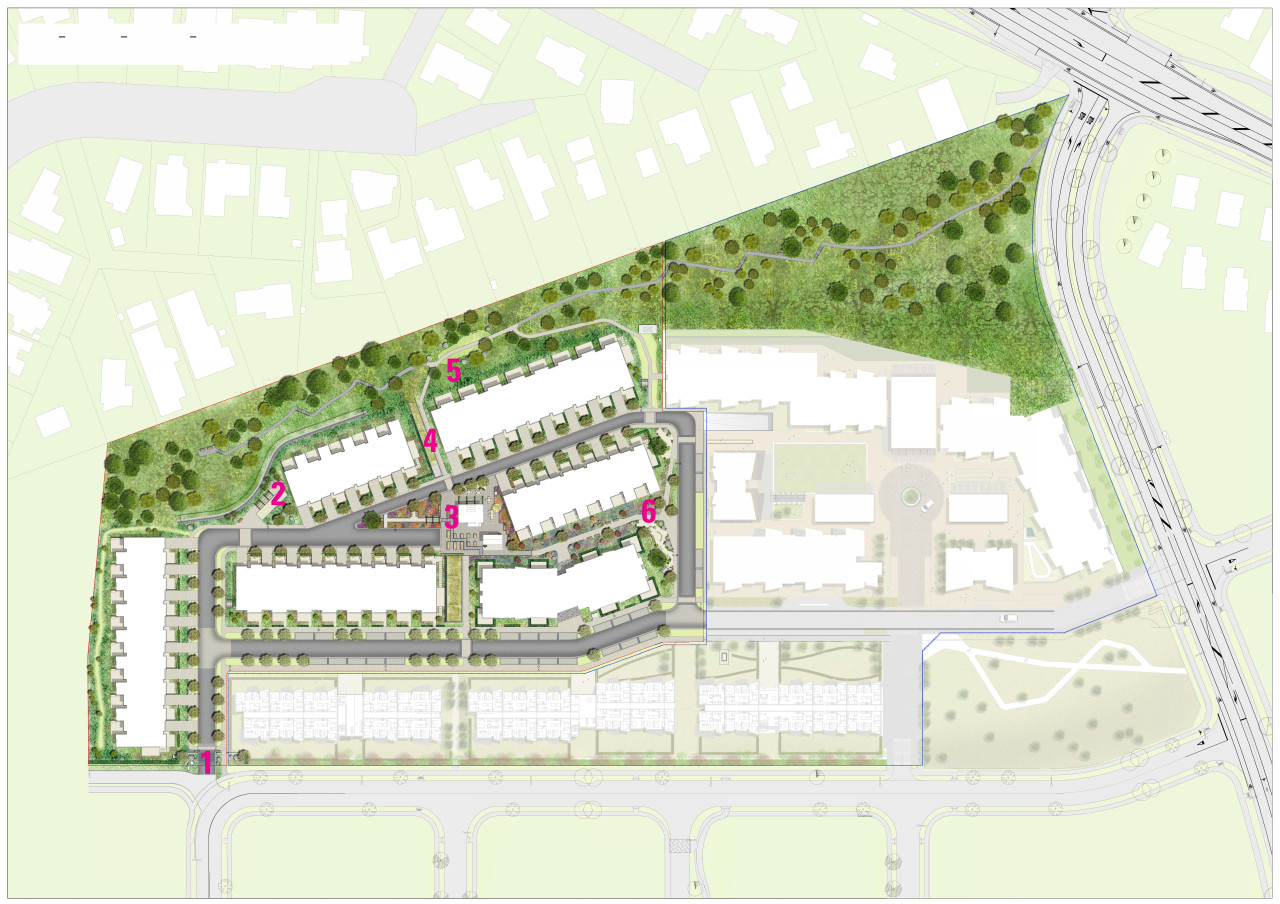Three key factors in masterplanning a senior living residential development
Senior principal Emma Todd and associate partner Morné Hugo discuss how establishing pathways for interaction is central to Boffa Miskell’s approach to masterplanning and landscape design in today’s senior living communities
With life expectancy continuing to rise, and evolving views on what life after retirement looks like, it’s no wonder that today’s aged-care residences are a far cry from those of twenty, or even ten, years ago.
In fact, terms like ‘aged-care residence’ and ‘retirement village’ are eschewed by residents and master-planners alike. The preferred phrase is ‘senior living’ – reflecting that, while these residential enclaves may be designed for the over-65 set, they’re no longer a place for them to sit quietly out of the way and wait for the inevitable.
Over the past three decades, urban designers and landscape architects at Boffa Miskell have master-planned senior living communities and large-scale residential developments throughout the country. These days, developers are embracing a more holistic way of thinking around what senior living looks like.
The three key drivers for masterplanning a residential development are: creating a community, establishing a place, and designing for use. Those factors are always there – although how they are implemented varies from project to project.
Our design team is particularly inspired by the Māori philosophies of Hauora (well-being, complete health), Hononga (establishing connections and relationships), and Whakapapa (place and heritage); and how we can translate these ideas into the design of senior living communities.
Creating a community is more than simply building houses; it’s about building connections and encouraging engagement. To provide a physical framework in which a senior living community can thrive, there should be a recognisable centre and multiple spaces for residents to interact through a range of activities.
Careful consideration will put in place a hierarchy of streets – from main through-routes to cul-de-sacs or lanes – that are legible and walkable, and create a chain of connected spaces with a social heart.
How we design these connected spaces – though planting, seating, lighting, and the public frontages of the buildings – is what provides a distinctive and recognisable identity to the village that encourages residents to take ownership of their living environment and surroundings.
Shared gardens, a café, open spaces for special events like a farmers’ market, and on-site playgrounds are among the most sought-after amenities. These features are seen to have a positive impact in retaining inter-generational connections, while also providing a legible ‘village green’ social centre that encourages residents to get out and about and enjoy nature-led activities and outdoor fitness opportunities.Interaction is increasingly recognised as essential to older peoples’ well-being. In the past, even the most sought-after senior living facilities often forgot the human need for socialisation in their design.
With a focus on preserving independence, opportunities for communal experiences and encounters were seen as a secondary consideration and unintentionally reduced.
In the late 1980s and ’90s, the emphasis was on individual units for independent living. These facilities were much more internally focussed and tended to have a rather formal entrance and quite structured flower beds that were for looking at, rather than a community asset that residents are encouraged to be involved with.
More recently, there has been a transition from this lower density development to apartment-style living, and there is a concurrent change to a communal landscape for activity.
For seniors, particularly those living with physical limitations, ‘active’ is a relative description and may be better expressed as having access to, and moving within, the outdoor environment. So, we provide opportunity for independent walking, being pushed in a wheelchair, or using an electric wheelchair.
Paths and sidewalks encourage and enable residents to move around outdoors. The planting associated with these paths should be colourful, perfumed and hold interest for the residents; and by providing seating with backs and arm rests, residents can enjoy sitting out in the sun.
An important factor is the opportunity to interact with neighbours. Can a walking path run in to a nearby street pavement, where incidental ‘Good morning, beautiful day’ conversations can happen?
Does an adjacent reserve provide the opportunity for residents to watch children’s sport or families having fun on a playground? Is it appropriate to make a direct link into that reserve space, or to other public spaces?
The idea of integration with the neighbourhood reflects the fact that most residents of senior living communities come from the local area and wish to retain independent access to these familiar places. The model of retirement villages that are fully fenced and isolated from the surrounding residential community is slowly changing.
Some aged-care providers still insist on facilities with walls and gates, believing this provides a sense of security that residents want. However, working towards a mixed model where openness and security concerns are balanced, and addressed through intuitive design and CPTED (crime prevention through environmental design) analysis during the concept and developed design process, is gaining traction.CTPED strategies include careful consideration of planting design to provide privacy without causing visual obstructions and unsafe spaces, the correct use of street lighting and careful use of CCTV monitoring, and encouraging pedestrian traffic and social interaction.
The desired outcome is to create an environment that is well-cared for and occupied by residents throughout the day. Studies have shown that the application of CPTED measures overwhelmingly reduces criminal activity by encouraging shared ownership and natural surveillance by residents.

As expectations continue to evolve, we anticipate demand for more flexible living options. So, although people may choose to downsize or simplify, it’s not the retirement of years ago.
The model is no longer to retire at 65 and to change your way of living entirely – older people are choosing to stay in the workforce and a more active aging model is being adopted.
The positive outcomes go both ways – seniors have a lot to offer; and there are opportunities to benefit from their knowledge and experience if they are kept involved with family and community, rather than going to live in an isolated retirement village.
We see this trend toward openness and connectivity gaining momentum as the youngest Babyboomers, followed by GenX, become seniors.
Plus, the current retirement generation didn’t grow up with smart phones and social media as an integral part of life. GenX generation has, and that’s another form of connection that needs to be considered in senior living communities of the future.
Story by: Trendsideas
Home kitchen bathroom commercial design
Singing in the rain – 9 showers to inspire
Black magic
Exotic presence
Commercial Design Trends Vol. 35/2C
The world of hotel design is changing, with a move away from bland repetition of a chain’s design template to giving gue...
Read More





